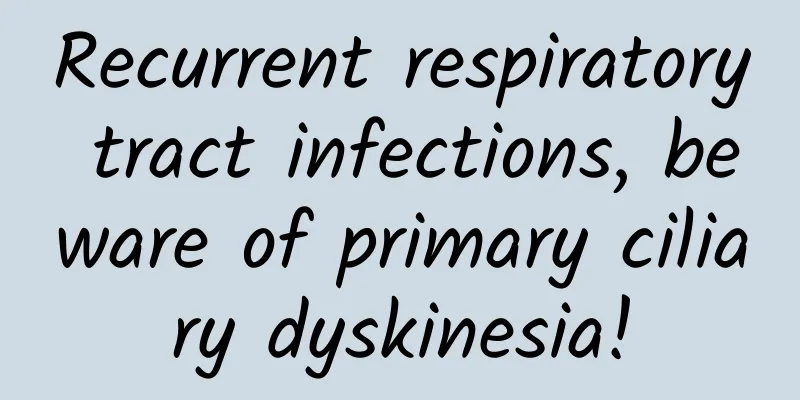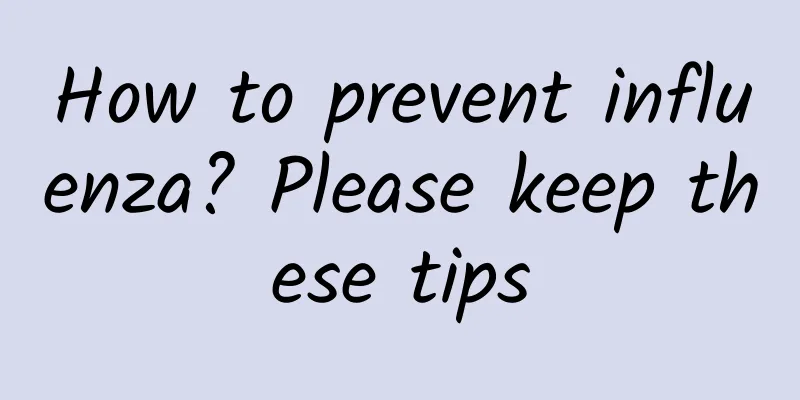Recurrent respiratory tract infections, beware of primary ciliary dyskinesia!

|
Author: Xu Baoping, Chief Physician, National Children's Medical Center, Beijing Children's Hospital, Capital Medical University Reviewer: Ma Mingsheng, deputy chief physician, Peking Union Medical College Hospital There is a disease that may only occur in one out of tens of thousands of people in ordinary areas, but may occur in one out of more than 2,000 people in areas with close relatives marrying. This disease is primary ciliary dyskinesia. 1. What is primary ciliary dyskinesia? Primary ciliary dyskinesia is a genetic disease, most of which are autosomal recessive. It is a group of diseases caused by abnormalities in the structure or function of cilia. The reason why it is called a series is that multiple systems will be affected, but the most common is the respiratory system, which is mainly manifested by repeated infections of the upper and lower respiratory tract, including sinusitis, tracheitis, bronchitis, pneumonia, followed by bronchiectasis, respiratory failure, etc. Figure 1 Original copyright image, no permission to reprint Because cilia are hair-like organelles with a very wide distribution range, but the most common site of distribution is the respiratory epithelium, the respiratory system is the most seriously affected. In addition to the clinical manifestations of the respiratory system, there are also manifestations of other systems. For example, some children may have hearing problems, eye problems, hydrocephalus, etc.; because there are cilia on the fallopian tubes, it can also cause female infertility or ectopic pregnancy; in addition, sperm also has flagella and can move. If the flagella move abnormally, it will cause male infertility; these are all clinical manifestations of primary ciliary dyskinesia. 2. Why do children with primary ciliary dyskinesia suffer from recurrent respiratory tract infections? The main reason is the abnormal function of respiratory cilia. The main function of respiratory cilia is to promote the movement of the mucus blanket on it, thereby expelling foreign particles, pathogenic microorganisms, necrotic and detached cells, sputum, etc. that are inhaled into the body. When the respiratory cilia function abnormally, these substances cannot be expelled and accumulate in the respiratory tract, blocking the airway and causing infection. This is the reason why children with primary ciliary dyskinesia have repeated respiratory infections. This persistent or recurrent infection can cause an inflammatory response, further aggravating damage to the cilia, creating a vicious cycle in which symptoms gradually worsen. 3. How to diagnose primary ciliary dyskinesia? First, repeated or persistent lower respiratory tract infections, such as recurrent bronchitis, pneumonia, bronchiectasis, atelectasis, etc. Second, recurrent or persistent sinusitis. Third, total situs inversus or dextrocardia. Fourth, unexplained breathing difficulties and respiratory distress occur in the full-term neonatal period. When the above clinical manifestations occur, primary ciliary dyskinesia should be considered. The measurement of nasal exhaled nitric oxide (nNO) is a screening test. Patients with primary ciliary dyskinesia have decreased nNO, but they need to be differentiated from other diseases that cause decreased nNO. Transmission electron microscopy is the gold standard for diagnosing primary ciliary dyskinesia. Abnormalities in the ultrastructure of cilia can be seen under the electron microscope. Genetic testing is also available and is becoming more and more common. However, it is expensive and about 30% of patients with primary ciliary dyskinesia do not have genetic abnormalities. There are some laboratories in China that can perform ciliary function tests. 4. How to treat primary ciliary dyskinesia? For this disease, the most important thing is symptomatic treatment. The so-called symptomatic treatment is mainly to keep the airways open and reduce respiratory infections, so expectorant treatment is a very important treatment. In addition, even if you try to prevent respiratory infections, it is difficult for patients with primary ciliary dyskinesia to avoid them completely. Once an infection occurs, anti-infection treatment is required. However, anti-infection treatment does not necessarily require the use of antibacterial drugs, and the treatment plan needs to be selected according to the pathogen of the infection. In addition, it does not need to be used for a long time, and is generally only used when respiratory symptoms worsen. If other problems arise, symptomatic treatment is also required. |
>>: How to help children with primary ciliary dyskinesia to pass sputum?
Recommend
What to do if you have amenorrhea at the age of 40
If amenorrhea occurs at the age of 40, it is defi...
If your organs could talk, how would you be scolded every day?
Review | Li Nannan Director of Hunan Science Writ...
What causes dizziness and vomiting in pregnant women?
Many women also experience dizziness, nausea, and...
My period is full of black blood clots
Many female friends have problems of one kind or ...
Symptoms after successful conservative treatment of ectopic pregnancy
Ectopic pregnancy is a condition that can only be...
Is edema normal during 4 months of pregnancy?
Pregnant women should pay attention to changes in...
Is sweating after induction of labor good or bad?
Every woman wants to give birth to a healthy baby...
How big is the fetus at seven months of pregnancy and what should be paid attention to
I don’t know if you know how big the fetus is at ...
Can I get pregnant if I have sex the day before my period?
A woman’s ovulation period has a great impact on ...
It's blood shortage season again, but these blood donors are rejected
The annual clinical plasma demand gap in mainland...
Symptoms of pregnancy during lactation
Generally speaking, pregnancy during breastfeedin...
How to treat vulvar leukoplakia
The incidence of vulvar leukoplakia is relatively...
Folk remedies for treating melasma: both sun protection and sun protection
According to experts, among the many pigmentation...
There are polyps at the cervix, and cervical polyps need treatment
Cervical polyps are a chronic cervicitis, especia...
What supplements are good for pregnant women with miscarriage?
If a pregnant woman has a miscarriage, she will b...









